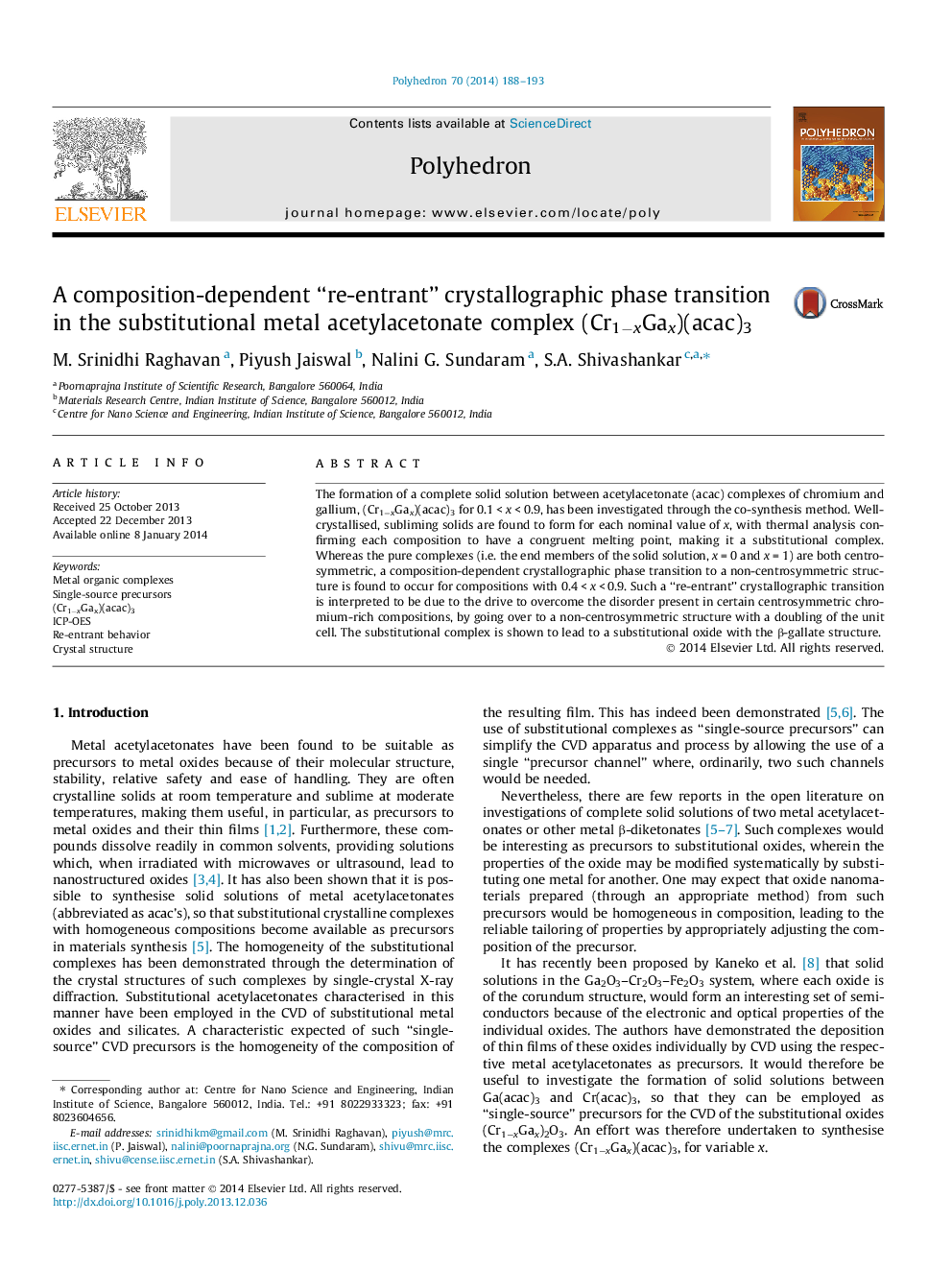| Article ID | Journal | Published Year | Pages | File Type |
|---|---|---|---|---|
| 1336512 | Polyhedron | 2014 | 6 Pages |
The formation of a complete solid solution between acetylacetonate (acac) complexes of chromium and gallium, (Cr1−xGax)(acac)3 for 0.1 < x < 0.9, has been investigated through the co-synthesis method. Well-crystallised, subliming solids are found to form for each nominal value of x, with thermal analysis confirming each composition to have a congruent melting point, making it a substitutional complex. Whereas the pure complexes (i.e. the end members of the solid solution, x = 0 and x = 1) are both centrosymmetric, a composition-dependent crystallographic phase transition to a non-centrosymmetric structure is found to occur for compositions with 0.4 < x < 0.9. Such a “re-entrant” crystallographic transition is interpreted to be due to the drive to overcome the disorder present in certain centrosymmetric chromium-rich compositions, by going over to a non-centrosymmetric structure with a doubling of the unit cell. The substitutional complex is shown to lead to a substitutional oxide with the β-gallate structure.
Graphical abstractIt is found that the metalorganic complex solid solution (Cr1−xGax)(acac)3, 0 < x < 1.0 (acac = acetylacetone) undergoes a crystallographic transition from cetrosymmetric to non-centrosymmetric and back to centrosymmetric structure as x is varied from 0 to 1.0. Non-centrosymmetry, and the attendant doubling of the unit cell, is the response to disorder present in the carbon atoms of the ligand in the Cr-rich compositions.Figure optionsDownload full-size imageDownload as PowerPoint slide
